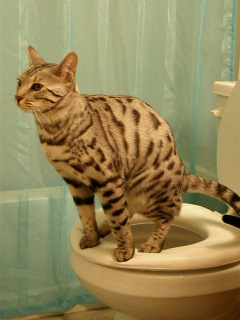Why Flushing Cat Poop Down Your Toilet Can Cause Problems - Tips for Safe Disposal
Call TodayIn this article down the page you'll find a good deal of wonderful resources involving How to Dispose of Cat Poop and Litter Without Plastic Bags.

Introduction
As feline owners, it's vital to be mindful of just how we deal with our feline friends' waste. While it may appear practical to purge cat poop down the toilet, this method can have harmful consequences for both the environment and human health.
Ecological Impact
Purging pet cat poop presents harmful microorganisms and bloodsuckers right into the supply of water, presenting a substantial risk to aquatic environments. These impurities can adversely influence aquatic life and concession water top quality.
Wellness Risks
Along with ecological worries, purging feline waste can likewise position health and wellness risks to humans. Pet cat feces might consist of Toxoplasma gondii, a parasite that can cause toxoplasmosis-- a potentially extreme disease, particularly for expecting females and people with damaged immune systems.
Alternatives to Flushing
The good news is, there are much safer and much more accountable methods to get rid of feline poop. Consider the following choices:
1. Scoop and Dispose in Trash
The most typical approach of throwing away pet cat poop is to scoop it into a naturally degradable bag and toss it in the garbage. Make sure to make use of a committed clutter inside story and get rid of the waste promptly.
2. Usage Biodegradable Litter
Opt for naturally degradable pet cat litter made from materials such as corn or wheat. These trashes are eco-friendly and can be securely thrown away in the garbage.
3. Bury in the Yard
If you have a lawn, consider hiding cat waste in a designated area far from veggie gardens and water sources. Make sure to dig deep sufficient to avoid contamination of groundwater.
4. Install a Pet Waste Disposal System
Invest in a pet garbage disposal system especially developed for cat waste. These systems make use of enzymes to break down the waste, minimizing odor and ecological effect.
Conclusion
Accountable animal possession extends past providing food and sanctuary-- it also includes proper waste administration. By avoiding flushing feline poop down the commode and choosing different disposal methods, we can decrease our ecological footprint and protect human health and wellness.
Why Can’t I Flush Cat Poop?
It Spreads a Parasite
Cats are frequently infected with a parasite called toxoplasma gondii. The parasite causes an infection called toxoplasmosis. It is usually harmless to cats. The parasite only uses cat poop as a host for its eggs. Otherwise, the cat’s immune system usually keeps the infection at low enough levels to maintain its own health. But it does not stop the develop of eggs. These eggs are tiny and surprisingly tough. They may survive for a year before they begin to grow. But that’s the problem.
Our wastewater system is not designed to deal with toxoplasmosis eggs. Instead, most eggs will flush from your toilet into sewers and wastewater management plants. After the sewage is treated for many other harmful things in it, it is typically released into local rivers, lakes, or oceans. Here, the toxoplasmosis eggs can find new hosts, including starfish, crabs, otters, and many other wildlife. For many, this is a significant risk to their health. Toxoplasmosis can also end up infecting water sources that are important for agriculture, which means our deer, pigs, and sheep can get infected too.
Is There Risk to Humans?
There can be a risk to human life from flushing cat poop down the toilet. If you do so, the parasites from your cat’s poop can end up in shellfish, game animals, or livestock. If this meat is then served raw or undercooked, the people who eat it can get sick.
In fact, according to the CDC, 40 million people in the United States are infected with toxoplasma gondii. They get it from exposure to infected seafood, or from some kind of cat poop contamination, like drinking from a stream that is contaminated or touching anything that has come into contact with cat poop. That includes just cleaning a cat litter box.
Most people who get infected with these parasites will not develop any symptoms. However, for pregnant women or for those with compromised immune systems, the parasite can cause severe health problems.
How to Handle Cat Poop
The best way to handle cat poop is actually to clean the box more often. The eggs that the parasite sheds will not become active until one to five days after the cat poops. That means that if you clean daily, you’re much less likely to come into direct contact with infectious eggs.
That said, always dispose of cat poop in the garbage and not down the toilet. Wash your hands before and after you clean the litter box, and bring the bag of poop right outside to your garbage bins.
https://trenchlesssolutionsusa.com/why-cant-i-flush-cat-poop/

We hope you enjoyed reading our post on Don’t flush cat feces down the toilet. Many thanks for finding the time to browse our post. Enjoyed reading our article? Please share it. Help somebody else locate it. Kudos for your time. Kindly come visit our blog back soon.
Schedule Your Job Now